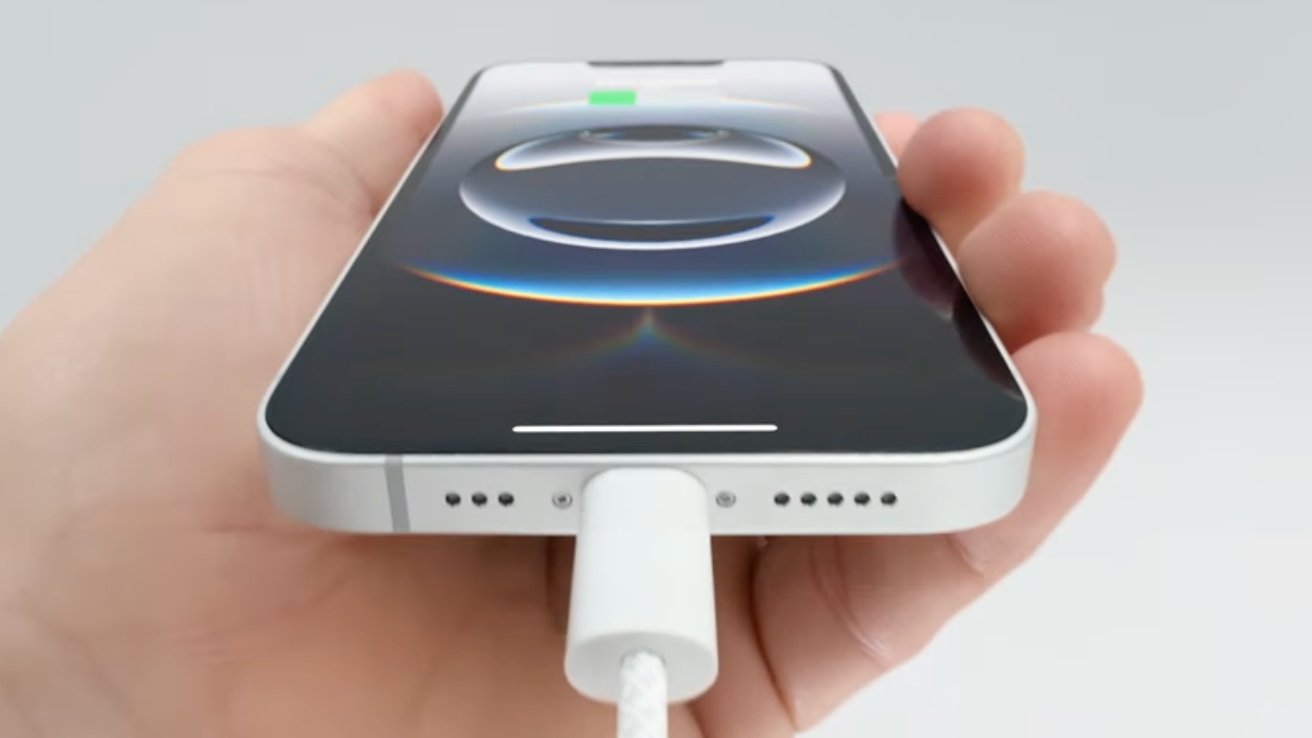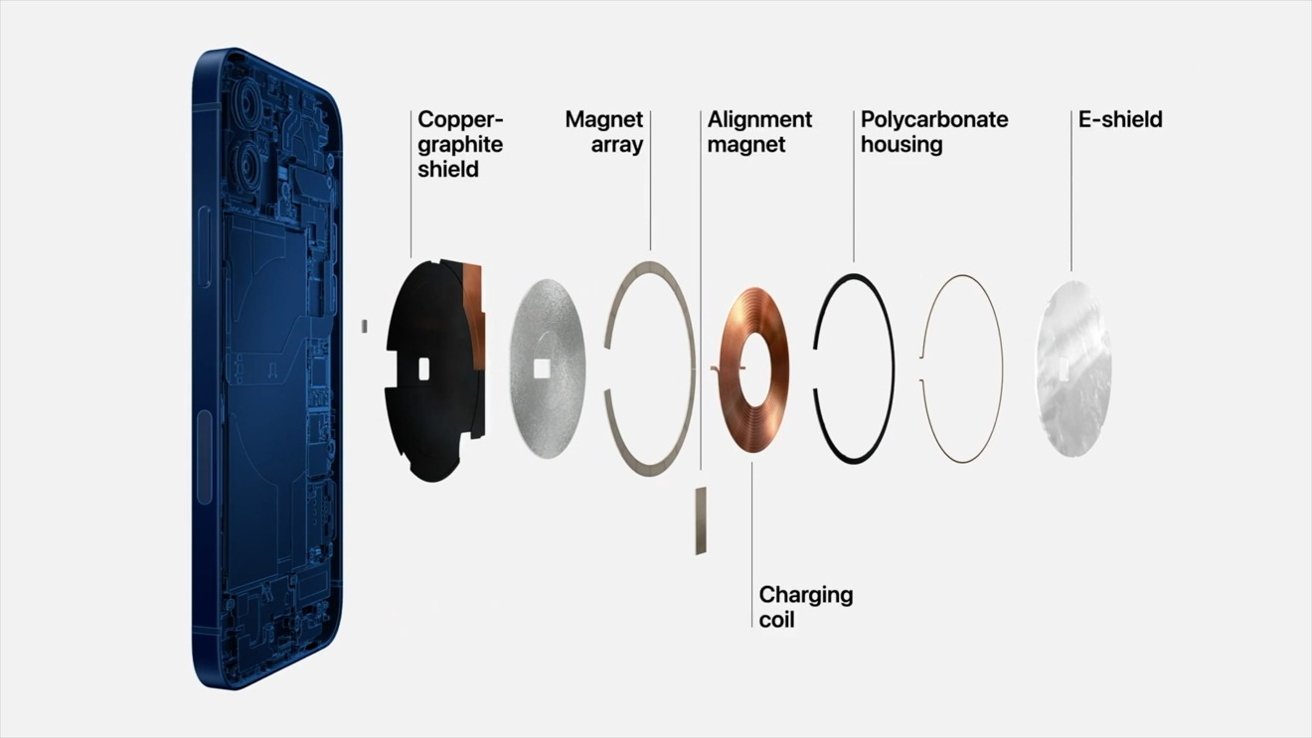Apple cut too much by removing MagSafe from the iPhone 16e
Apple says that you can use wireless Qi chargers with the iPhone 16e and it's true, but isn't MagSafe and that causes problems.

Apple can't come out and say wired charging is better than wireless, but it tried.
One of the compromises Apple made with making a lower-cost entry to the iPhone 16 range was to remove MagSafe. Apple is correct when it says you can still use wireless charging, but that's not the half of it.
If you have to use a Qi charger instead of MagSafe, it will take much longer and it will be so inefficient that it uses more power. And that's if you can be certain you have placed the iPhone 16e on exactly the right spot of the Qi charger.
Compare that last to MagSafe. You are never in any doubt whether you have or have not positioned the iPhone correctly because the magnets practically tug you to the right spot.
The magnets also mean that the iPhone's charging circuitry precisely lines up with the charger so all of the available charge is going into the phone. That certainty that you are charging is probably more important than the fact MagSafe charges faster.
If you always charge your iPhone overnight then you have no need to care how long it takes. But if the iPhone wasn't aligned and didn't charge, now the time it takes before you can leave home is important.
MagSafe charges at 25 watts on the iPhone 16. A regular Qi charger can manage a peak of 7.5W on the iPhone 16e.
Qi2 is better, but you won't get it
Apple based its MagSafe system on the original Qi, but then built up around it so that it became a proprietary wireless charger. Apple also added components to allow the mounting of different accessories.
But then Apple contributed its MagSafe technology to the consortium behind Qi. That ultimately meant that the more recent Qi2 is really MagSafe.
All of this is moot, though, as the iPhone 16e does not support either MagSafe or Qi2.
Stick to wired charging
There's a reason Apple's vice president of iPhone Product Marketing, Kaiann Drance, discussed charging the order she did in Apple's video launch. First, and with most emphasis, Drance talked about charging the iPhone 16e with a cable.
She specifically pointed out that it would be a USB-C cable, and made a virtue of how this meant the same cable could charge many different devices.
But then, practically as a throwaway comment, she said "and of course, it supports wireless charging too."
Apple thinks you should be charging the iPhone 16e with a USB-C cable, and Apple is right. Charging by a cable is always faster anyway, but in this case it's also sensible because it's clear when you've connected the charger correctly.

How Apple's MagSafe works
Then, using the cable means a more efficient use of power to recharge the device's large battery. It means less power is wasted through the generation of heat because the phone isn't aligned correctly.
And it means that you're limited in the charging stands you can buy.
Reclined chargers will work, for instance, but only so long as the charging section is not floating. If the iPhone can rest on a lip at the bottom, reclining chargers are fine.
However, the iPhone 16e will not stay on a floating or a vertical charger, for instance, because these have no magnets or support.
Without question, there are going to be many third-party firms that claim to solve this. But they'll solve it by selling cases that have magnets in them -- and that's not a solution.
Having magnets in an iPhone case can block or reduce the speed of wireless charging. So you could end up trying to improve matters with a case that then makes things worse.
All of this also has the knock-on effect that iPhone 16e users will not have StandBy. That's where an iPhone on charger can be turned to the horizontal and the screen is filled with a clock.
StandBy absolutely requires an iPhone to be charging, it won't start without being on a charger. In theory that's all it needs, but for practical purposes StandBy works best when the iPhone has an always-on display.
So removing MagSafe has lengthened wireless charging time, it's made putting the phone onto charge unnecessarily harder. And it's taken away the StandBy feature that's on other iPhones.
But then that said, it's also taken away certain Apple iPhone accessories and Apple sells a lot of those. So Apple will lose out on accessory sales.
After some drama we heard overnight about concerns that a MagSafe case might interfere with the modem, we're now certain that case manufacturers are going to crank out accessories that add the feature. But, it won't bring 25W charging, and that design you want for your case probably won't have it -- just a select few.
MagSafe seems like such an obscure feature, but if you use it, you find it very hard to go back to an iPhone without it. It's a shame that you'll have to buy something else to use one of the best features of the iPhone ecosystem.
Read on AppleInsider




Comments
Personally, I love it because it means that the Qi charger doesn't have to be set so preciously to work (which I do have to do on occasion when the Qi charger doesn't have it. I also like having it as a quick mount in my automobile.
But if you're hooked on MagSafe, Apple is more than happy that you'll pay $200 more to satisfy that need.
(And no one cares that it uses more electricity to charge wirelessly without MagSafe. But Mother Earth might wag a finger at Tim in the next video I suppose.)
The article states that Apple removed MagSafe. The SE and XR models never included MagSafe and so it wasn't really removed. Still a very capable phone. Just as the power button on Mac mini this gives us something to talk about :-)
From the FDA.gov website: "Magnets in Cell Phones and Smart Watches May Affect Pacemakers and Other Medical Devices"
"The FDA is aware of published articles which describe the effect that sufficiently strong magnetic fields can turn on the magnetic safe mode when in close contact. The FDA also conducted its own testing on some products that use the high field strength magnet feature and have confirmed the magnetic field is both consistent with the publications and strong enough to turn on the magnetic safety mode of the medical devices in question. The FDA believes the risk to patients is low, and the agency is not aware of any adverse events associated with this issue at this time." (MY BOLD)
I'm not a doctor but we have pacemaker wearer in the family and they work great. The cardiologists told us that a pacemaker patient should avoid close (defined by Medtronic and FDA as 6" or less) or prolonged contact with electronic devices, all of which have a magnetic field. So don't hold it against your pacemaker, don't wear it in a pocket over your pacemaker. It's better to use it on the side away from the pacemaker to be cautious. It applies to all cell phones, watches, radios/walkie-talkies, game controllers, etc. When the pacemaker is too close to a magnetic field it goes into a protective "magnet mode" until the field is moved away, and it resumes normal operation. BUT depending on the heart problem, this period of pacemaker inactivity can be debilitating or fatal, so patients always have to be aware. All this and more is in the website quoted above.